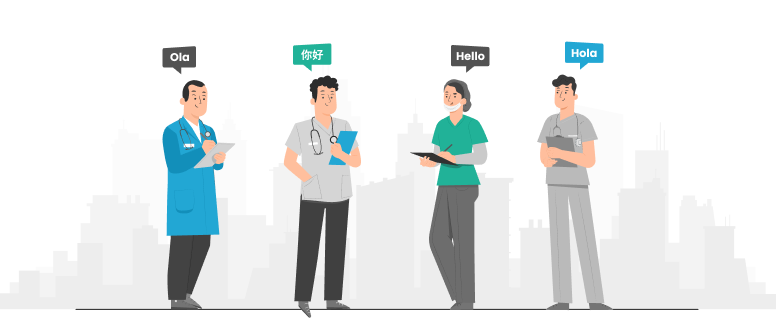We have discussed Translation of Restrictive Attribute Clause in Medical English in last article. Here, let’s learn Translation of Non-restrictive Attribute Clause in Medical English together.
Non-restrictive attribute clause is often led by which, when and where. When led by which, there is a comma to separate it in common cases. However, led by when or where, the comma exists or not which is decided by its meaning. Non-restrictive attribute clause is often used to play a supplement or explanation role. Therefore, this kind of clause can be translated behind the main sentences. Several translation methods are as followings:
(I) Translated to be parallel branch sentences. The subject of the second branch sentence can be translated to “该”、“这”and so on, or can repeat the antecedent or use pronoun.
For example:
The heart is a significant organ of circulation, the function of which is to pump blood to all parts of the body. 心脏是非常重要的循环器官,其功能是把血液搏往全身。
Here, the antecedent “which” refers to “the heart”, translated to “其”.
(II) Translated to be adverbial clause.
For example 1:
Every patient with valve or congenital heart diseases who develops an obscure fever which continues more than several days should be suspected. 任何瓣膜或先天性心脏病患者,如果持续多日出现不明原因的发热,即应加以怀疑。
Here, who clause is translated to be conditional adverbial clause.
For example 2
The future would seem to lie in chemotherapy, which has proved an effective weapon in the war against bacteria. 未来似乎寄希望于化疗,因为这已被证明是治疗细菌性疾病的有效疗法。
Here, which attribute clause is translated to be reason conditional adverbial clause.
(III) Translated to be appositive sentence, often led by word “即”。
For example:
The dosage should be decreased gradually to the minimal effective level which may be as low as 50 mg daily. 剂量应逐渐减少至最低有效水平,即每日剂量低至 50mg。
(IV) Taking use of interpunction, dash, etc. to deal with the attributive clause.
For example:
When in doubt, which is not infrequent, one will establish the diagnosis by taking
an x-ray. 如有怀疑(这种情况也是常见的),可通过拍 X 光确定诊断。
Practice:
1. There is less embarrassment of physiologic functions, which helps the patient’s recovery.
2. The disease, which may occur at any age, is more frequent in children.
3. After several hours, the pain tends to localize in the right lower part of the abdomen, which is the area of appendix.
Take a look at how we helped our client by localizing their project for Life Sciences Industry. Click here to read the complete case study



